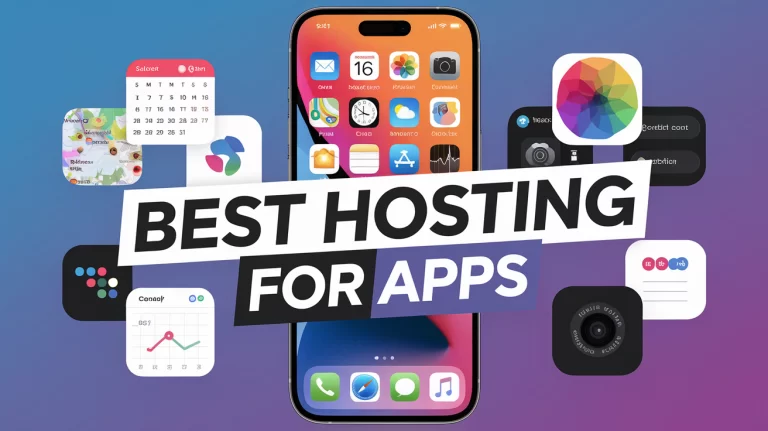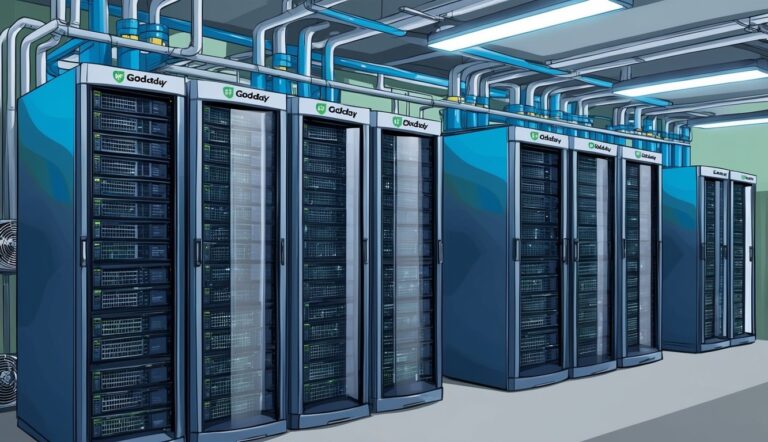How to Optimize Game Server Performance with A2 Hosting: A Guide to Maximum Speed and Reliability

Running a game server can be challenging, especially when players experience lag or disconnections. Your gaming community deserves smooth gameplay and low latency, which means server optimization is crucial for success.

Using A2 Hosting’s optimized servers combined with proper configuration can improve your game server performance by up to tenfold and reduce bandwidth usage by 80%. Setting up your game server correctly from the start helps prevent common issues that can frustrate players and damage your server’s reputation.
You can take several steps to enhance your server’s performance, from removing unused add-ons to implementing effective caching solutions.
By focusing on these optimization techniques, you’ll create a better gaming experience with reduced ping times and improved server response rates.
Understanding Game Server Performance
Game server performance directly affects your ability to provide a smooth, competitive gaming environment. Fast response times and stable connections make the difference between victory and defeat.
The Impact of Latency and Ping on Gaming
Network latency is the time it takes for data to travel between your server and players’ computers. Lower numbers are better – aim for ping times under 100ms for most games.
Latency spikes can cause players to rubber-band or teleport around the map. This ruins the gaming experience and makes competitive play impossible.
Your server location plays a huge role. Pick a data center close to your players to minimize ping times. Players more than 2000 miles away will likely see pings over 100ms.
Key Performance Metrics for Gaming Servers
Essential metrics to monitor:
- CPU usage (keep under 80%)
- RAM utilization
- Network bandwidth
- Active connections
- Packet loss rate
Your server’s CPU performance directly impacts game logic processing speed. Watch for CPU bottlenecks during intense gameplay moments.
RAM requirements vary by game type. MMOs need more RAM to handle large player counts, while FPS games focus on quick data processing.
Track packet loss – even 1% can cause noticeable lag. Use network monitoring tools to catch issues before players complain.
Optimizing Server Resources
Proper resource management directly impacts gaming performance and player experience. Setting up the right hardware configurations and implementing smart resource allocation strategies can make a huge difference in server responsiveness.
Leveraging SSD Storage for Speed
Fast storage solutions are crucial for quick map loading and real-time data processing. SSDs drastically reduce load times compared to traditional HDDs.
Store frequently accessed game files on SSDs for maximum performance benefit. This includes map data, player information, and critical game assets.
Key SSD optimization tips:
- Enable TRIM support
- Maintain 20% free space for optimal performance
- Use enterprise-grade SSDs for better durability
- Implement proper backup schedules during low-traffic periods
Memory Limit Management for Game Servers
Setting appropriate memory limits prevents crashes and ensures smooth gameplay. Start with a baseline of 4GB RAM per game instance.
Monitor your RAM usage patterns to identify peak times and adjust accordingly. Use swap space strategically, but don’t rely on it as primary memory.
Memory optimization checklist:
- Configure proper Java heap sizes for Minecraft servers
- Set up memory limits in your control panel
- Monitor RAM usage with system tools
- Clear memory cache periodically
CPU Performance and Scaling Strategies
Smart CPU resource allocation helps handle more players without lag. Consider using CPU affinity settings to dedicate cores to specific game processes.
Vertical scaling works well for single-server setups. Add more powerful CPUs or upgrade to better processors when needed.
For larger player bases, look into horizontal scaling:
- Set up multiple game instances
- Use load balancers to distribute player connections
- Implement proper thread management
- Monitor CPU usage and temperature
Keep track of your CPU usage patterns and set up alerts for when utilization exceeds 80%.
Server Configuration and Management
Proper server setup and configuration make the difference between a laggy gaming experience and smooth gameplay. Smart choices in hosting solutions, operating system optimization, and server-side configurations work together to maximize performance.
Choosing the Right Hosting Solution
Managed dedicated servers provide the best foundation for gaming performance. You’ll get complete control over hardware resources without the hassle of manual maintenance.
Select a hosting plan with NVMe storage for faster load times. Pick CPU configurations that match your game’s demands.
Your control panel choice matters too. cPanel gives you an easy interface to manage server settings, monitor resource usage, and handle player access.
Gaming-specific optimizations like allocated memory limits and network settings need regular adjustment based on player count.
Configuring Linux Operating System for Gaming Servers
Linux offers superior performance for game servers through better resource management. Start by disabling unnecessary system services to free up RAM and CPU cycles.
Optimize your kernel settings:
- Set
vm.swappinessto 10 - Increase
net.core.somaxconn - Adjust
net.ipv4.tcp_fin_timeout
Then, configure your server parameters in the game config files for each specific title. Minecraft servers benefit from custom Java arguments, while CS needs specific networking tweaks.
Effective Use of .htaccess File for Advanced Performance
The .htaccess file is your secret weapon for server-side optimization. Enable caching for static game assets to reduce load times.
Key .htaccess tweaks:
- Enable GZIP compression
- Set expire headers for game files
- Configure keep-alive connections
Create custom error pages to handle disconnections gracefully. This keeps players informed when issues occur.
Block unwanted traffic and potential DDoS attempts with IP filtering rules. This protects your server resources for actual players.
Enhancing Data Delivery and Reducing Load Times
Fast data delivery is crucial for smooth gameplay and happy players. Smart optimization techniques can cut load times by up to 70% while keeping your server running at peak performance.
Adapting Content Delivery Networks (CDN)
A CDN spreads your game data across multiple servers worldwide. When players connect, they’ll get data from the closest server to them. This reduces physical distance and speeds up response times.
You’ll want to pick a CDN with servers near your player base. For example, if most of your players are in Asia, choose CDN nodes in Singapore, Japan, or South Korea.
Key benefits of using a CDN:
- Faster asset loading
- Lower server bandwidth costs
- Better protection against DDoS attacks
- Automatic file caching
Implementing Gzip Compression
Gzip compression shrinks your data files before sending them to players. This means faster downloads and less bandwidth usage.
Enable Gzip compression for:
- Game assets
- Configuration files
- Map data
- Texture files
You can typically turn on Gzip through your server’s .htaccess file or nginx configuration. Most modern web servers support it by default.
CSS and JS Minification Techniques
Removing unused add-ons and minifying code makes your files smaller and faster to load.
Use these minification steps:
- Remove comments and whitespace
- Combine multiple CSS files
- Merge JavaScript files
- Use shorter variable names
Many automated tools can handle minification for you. Popular options include UglifyJS for JavaScript and Clean-CSS for stylesheets.
Set up automatic minification in your build process to keep files optimized without extra work.
Caching Mechanisms for Gaming Servers
Implementing the right caching strategy can dramatically speed up your game server performance and reduce latency for players. A well-configured caching system helps deliver game assets and data faster while reducing server load.
Role and Configuration of Memcached
Memcached configuration plays a crucial role in optimizing your game server’s memory usage. It stores frequently accessed data in RAM, giving you lightning-fast access speeds.
Set your Memcached memory allocation based on your server’s available RAM. For most game servers, allocate 20-25% of total RAM to Memcached.
Key configuration tips:
- Set item size limits to prevent memory fragmentation
- Configure connection timeouts to 3 seconds maximum
- Enable compression for items larger than 100KB
- Monitor cache hit rates to optimize performance
Utilizing Browser Caching to Reduce Latency
Browser caching helps your players load game assets faster by storing files locally on their machines. This reduces server load and improves response times.
Set appropriate cache headers for different asset types:
- Game textures: 1 month
- UI elements: 1 week
- Configuration files: 24 hours
- Dynamic game data: 1 hour
Add version numbers to file names when updating assets to ensure players get the latest content.
Optimizing Page Caching for Dynamic Content
Dynamic content caching requires careful balance between freshness and performance. Focus on caching static elements while keeping real-time data fresh.
Use object caching to store:
- Player profiles
- Leaderboard data
- Game state information
- Map data
Then, set up cache invalidation rules based on content type:
- Instant: Chat messages, player positions
- Short-term: Match results, player stats
- Long-term: Maps, item definitions
Security and Reliability Considerations
Protecting your game server requires multiple layers of defense while maintaining peak performance and stability for your players. Strong security measures combined with reliable infrastructure keep games running smoothly.
Securing Game Servers with SSL and DDoS Protection
Strong security features are essential for protecting your gaming environment from threats. Start with SSL certificates to encrypt all data between players and your server.
Key Security Measures:
- Configure firewall rules to block unauthorized access
- Enable DDoS protection to prevent service disruptions
- Install malware scanners to detect threats early
- Set up regular security audits
Your first line of defense should be a robust firewall. Configure it to allow only necessary game ports and protocols.
Ensuring High Uptime and Quick Recovery
Regular backups and monitoring are crucial for maintaining server availability. Set up automated weekly backups of all game data and configurations.
Uptime Optimization Tips:
- Monitor server resources in real-time
- Schedule maintenance during off-peak hours
- Keep system updates current
- Test backup restoration procedures monthly
Create recovery plans for different scenarios. Document step-by-step procedures for quick response to common issues.
Implementing Bandwidth and Connection Quality Measures
High-performance connections require careful bandwidth management. Monitor your network usage and set appropriate limits for each player.
Connection Quality Settings:
- Limit maximum players based on bandwidth
- Set reasonable ping limits
- Configure QoS (Quality of Service) rules
- Track network performance metrics
Test your connection speeds regularly. Use network monitoring tools to identify and resolve bottlenecks before they affect gameplay.
Consider implementing regional server locations to reduce latency for players in different areas.
Advanced Optimization Techniques
Taking your game server performance to the next level requires some sophisticated tweaks and configurations that can dramatically boost speed and reliability.
Lightweight Software and Performance Tuning
Adjusting your server tick rate can significantly reduce processing overhead, especially during peak player counts.
You’ll want to strip down unnecessary background processes and services. Disable any auto-updates or scheduled tasks that might interrupt gameplay.
Key Performance Settings:
Set process priority to “High” for the game server executable
Disable unnecessary logging and debugging
Remove unused mods and plugins
Configure RAM allocation based on player count
The game server configuration file lets you fine-tune parameters like render distance and entity spawning limits.
Database and PHP Optimization for Enhanced Speed
Memcached statistics play a crucial role in monitoring cache performance. Keep an eye on hit rates and memory usage.
Database Optimization Tips:
Enable query caching
Regular database maintenance and cleanup
Index frequently accessed tables
Optimize MySQL configuration for your specific workload
PHP settings can make or break your server’s responsiveness. Increase memory_limit and max_execution_time values based on your game’s requirements.
Choosing the Right Game Server Location
Physical server location impacts player experience more than you might think. Pick a location that balances your player base’s geographical distribution.
A2 Hosting’s optimized servers offer multiple datacenter locations to minimize latency for your players.
Location Considerations:
Network connectivity and routing
Average ping times to major player regions
Backup datacenter availability
Regional internet infrastructure quality
Test connection speeds from different locations during peak hours to ensure consistent performance for all players.
Customizing Solutions for Different Gaming Platforms
Different gaming platforms require unique optimization approaches to deliver peak performance. Proper configuration of your content management system can make a huge difference in load times and user experience.
Optimization Strategies for WordPress Gaming Sites
WordPress gaming sites need specific tweaks to handle high traffic and resource-intensive content.
Essential WordPress Optimizations:
Enable PHP 8.1+ and leverage OPcache
Install a reliable caching plugin like W3 Total Cache
Minify CSS, JavaScript, and HTML files
Use a CDN for static content delivery
Keep your WordPress core, themes, and plugins updated to prevent security issues and performance bottlenecks. Regular database optimization helps maintain quick load times.
Enhancing Drupal, Joomla, and Magento Performance
Each CMS requires specific optimization techniques for gaming content. Configure server settings based on your platform:
Drupal:
Enable Redis or Memcached caching
Implement BigPipe for progressive loading
Use Image Styles for optimal graphics delivery
Joomla:
Activate Conservative Cache Settings
Enable Gzip Compression
Implement Browser Caching
Magento:
Configure Varnish Cache
Enable Flat Catalogs
Optimize MySQL Query Cache
Specialized Hosting for PrestaShop and OpenCart
E-commerce gaming platforms need extra attention to handle concurrent transactions and large product catalogs.
PrestaShop Performance Tips:
Enable CCC (Combine, Compress, Cache)
Use MySQL query caching
Implement Redis for session storage
OpenCart Optimization:
Enable OCMOD for efficient modifications
Implement Maintenance Mode during updates
Use Viewport Optimization for mobile users
Set up regular automated backups to protect your gaming store data. Monitor server resources to maintain optimal performance during peak gaming hours.
Evaluating and Selecting the Right Hosting Provider
When choosing a game server host, focus on performance and reliability first. High-speed connections and robust hardware are essential for smooth gameplay.
Your server location matters a lot. Pick a host with data centers close to where most of your players are located. This helps reduce lag and creates a better gaming experience.
Operating system optimization plays a big role in server performance. Look for providers that offer custom-tuned OS settings specifically for gaming workloads.
Key Features to Consider:
- Network uptime guarantees
- DDoS protection
- 24/7 technical support
- Automated backup systems
- Control panel ease of use
Scalability and flexibility are crucial as your gaming community grows. Make sure your provider allows easy upgrades to handle more players and increased resource demands.
Watch out for bandwidth costs! Choosing the right virtual machine size can help you balance performance and budget. Start with a smaller package and scale up as needed.
Read recent customer reviews and test response times from support teams. A provider’s track record with other game hosts can tell you a lot about their reliability.






